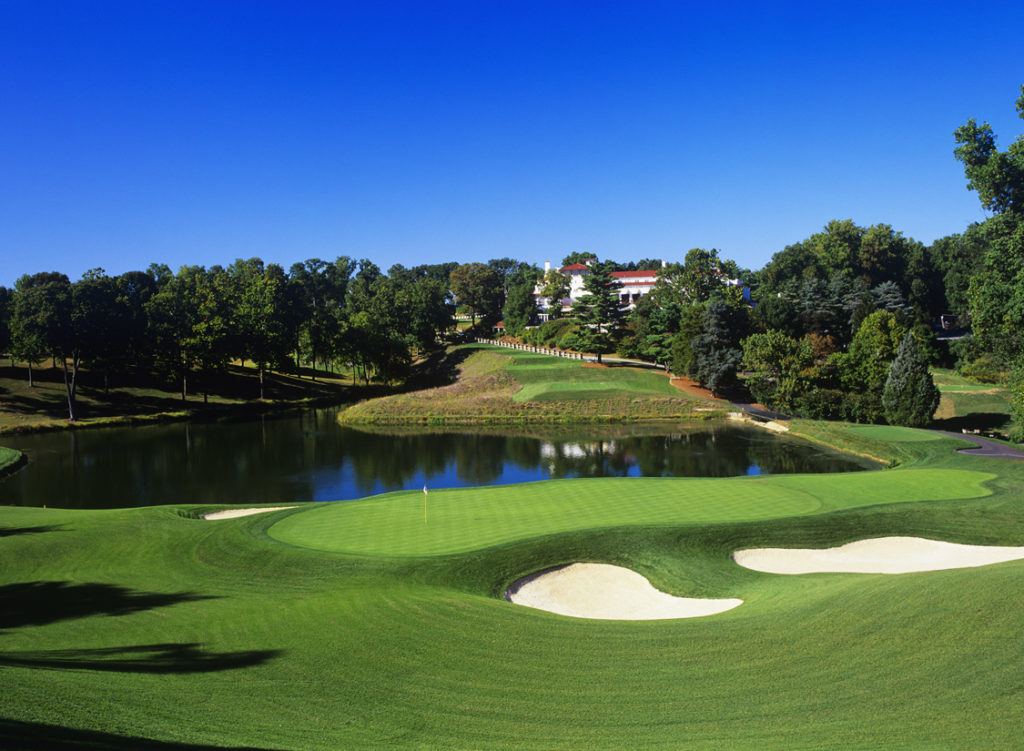Congressional Fully Prepped In Advance Of 2011 U.S. Open
“The Open Doctor” Rees Jones transforms Blue Course into a test for the best

MONTCLAIR, N.J. – Following a redesign by Rees Jones, the Blue Course at Congressional Country Club in Bethesda, Md. is prepared to host the 2011 U.S. Open. The national championship will be held June 16-19. Congressional has been the site of five previous USGA championships, including the 1995 U.S. Senior Open and the 1997 U.S. Open. Congressional also hosted the PGA Tour’s AT&T National event from 2007-09.
Originally designed by Devereux Emmet in 1924, the club’s Blue Course was revised by Robert Trent Jones in 1959 and was completely revamped 30 years later by his son Rees, at which time all of the greens, tees and bunkers were rebuilt. In addition, most of the fairways were regraded in preparation for the 1997 U.S. Open.
Since the 1997 U.S. Open, Jones has upgraded every hole on the layout to bring the Blue Course up to the 21st-century requirements of tournament golf. While the original corridors have for the most part been retained, the revised and expanded layout, now stretching to 7,568 yards, will present an entirely new array of challenges to U.S. Open competitors.
“The most significant course change prior to the upcoming championship came in 2006 when we converted the original par-three 18th hole into the current 10th hole,” said Jones. After weighing the options, Jones reversed the 18th hole to create a new par-three 10th hole. From 218 yards, the elevated tee gives players a sweeping view of a green positioned at the edge of a lake and protected by bunkers on its right and rear flanks. By changing the original 18th hole to the 10th hole, the course now finishes on what used to be the 17th hole.
In 2007, Jones returned to Congressional to make numerous modifications, including the insertion of a new championship tee at the sixth hole, which played as a par four during the 1997 U.S. Open. With the addition of the new tee, it will now play as a “reachable” 558-yard par five for the 2011 U.S. Open. “It will play as a true risk/reward par five” said Jones. “Players must choose between laying up with a second shot or flirting with the pond that protects the green in order to reach the putting surface in two.” The change to a par five at No. 6 brings the total par for the 2011 U.S. Open to 71, one more than the 1997 U.S. Open and the AT&T events.
In 2008, Jones was brought in to consult with the club for the rebuilding and reseeding of the greens. “We rebuilt all of the greens on the Blue Course to current USGA standards to provide firm, consistent putting surfaces,” Jones said. “In the process, we paid particular attention to the club’s desire to retain our 1989 green contours, ones that have successfully challenged the best players in the game and that Congressional’s members are understandably proud of.”
Jones continued his modification of the course last year by removing the bunkers in the landing area of the par-four 11th hole and shifting the fairway to the right to bring the stream into play. “It places a real premium on accuracy off of the tee,” said Jones.
In addition, at the 16th hole, a par five that will play at 579 yards for the championship, the first landing area was completely rebunkered to provide a set of strategic options for even the longest hitters. The left fairway bunkers were shifted farther out and angled into the fairway. An additional bunker was placed beyond the existing bunkers on the right. Said Jones, “The landing area has been opened up for those choosing to lay back, but for the player who wants to be in a position to go for the green, the angle has been made sharper in the 300-yard zone from the championship tee; they must work the ball to get into the proper position.”
Last year, Jones added a back tee on the 18th hole as well. With the addition of 50 yards at the finishing hole, Congressional’s 18th is now a dramatic 521-yard par four that tumbles downhill to a peninsula green angled into a pond. “With the added length, most players will be left with a mid-iron shot as they were in 1997. The player must guard against going left and into the hazard, but the right side of the green ties directly into the existing fairway grade so that running shots can roll onto the putting surface,” Jones explained.
“In conjunction with the club’s tournament committee, we’ve done a lot of work on the layout over the last 22 years,” Jones stated. “As it stands, it’s essentially a brand-new course.” Jones predicted that the hilly, tree-lined course will prove to be “fair but demanding,” noting that the well-defended greens have distinct transitions that require the players to play for the proper section of the green on approach shots. A difficult recovery awaits those who miss on the “short side” of the greens.
For Jones, known as “The Open Doctor” for the many courses he has redesigned in preparation for the national championship, the 2011 U.S. Open at Congressional will be the 10th U.S. Open to be held on a course he has reworked prior to the event. The U.S. Open sites modified by Jones include The Country Club (1988), Hazeltine (1991), Baltusrol (1993), Pinehurst No. 2 (1999, 2005, 2014), Bethpage Black (2002, 2009), Torrey Pines South (2008) and Congressional (1997, 2011).
A detailed hole-by-hole review of the changes made to Congressional’s Blue Course by Rees Jones is available on request.